- Lab publication on nonlinear relationship between immigrant concentration and crime
 A recent publication by lab directors Kubrin and Hipp, and alum Iris Luo explores the nonlinear relationship between immigrant concentration and crime. Consistent with much existing research generally finding that the presence of more immigrants in neighborhoods is associated with lower crime rates, this study using data from neighborhoods across the U.S. in the new… Read more: Lab publication on nonlinear relationship between immigrant concentration and crime
A recent publication by lab directors Kubrin and Hipp, and alum Iris Luo explores the nonlinear relationship between immigrant concentration and crime. Consistent with much existing research generally finding that the presence of more immigrants in neighborhoods is associated with lower crime rates, this study using data from neighborhoods across the U.S. in the new… Read more: Lab publication on nonlinear relationship between immigrant concentration and crime - Lab publication on Third Places and social cohesion
 Third places like bodegas and barbershops promote community well-being. “Respondents in neighborhoods with more third places report higher levels of interaction with their neighbors and greater cohesion, an effect that is most prominent in low-income neighborhoods.” That was a key result in a paper led by ILSSC alum Seth Williams. He summarizes the results of… Read more: Lab publication on Third Places and social cohesion
Third places like bodegas and barbershops promote community well-being. “Respondents in neighborhoods with more third places report higher levels of interaction with their neighbors and greater cohesion, an effect that is most prominent in low-income neighborhoods.” That was a key result in a paper led by ILSSC alum Seth Williams. He summarizes the results of… Read more: Lab publication on Third Places and social cohesion - Lab publication on criminal justice reformHow to Think about Criminal Justice Reform: Conceptual and Practical Considerations, by Charis E. Kubrin and Rebecca Tublitz How can we improve the effectiveness of criminal justice reform efforts? Effective reform hinges on shared understandings of what the problem is and shared visions of what success looks like. But consensus is hard to come by,… Read more: Lab publication on criminal justice reform
- Lab publication: Book on The Spatial Scale of Crime
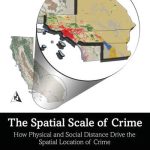 Lab co-director Dr. John R. Hipp has released a new book. In it he notes that a characteristic of many crime incidents is that they happen at a particular spatial location and a point in time. These two simple insights suggest the need for both a spatial and a longitudinal perspective in studying crime events.… Read more: Lab publication: Book on The Spatial Scale of Crime
Lab co-director Dr. John R. Hipp has released a new book. In it he notes that a characteristic of many crime incidents is that they happen at a particular spatial location and a point in time. These two simple insights suggest the need for both a spatial and a longitudinal perspective in studying crime events.… Read more: Lab publication: Book on The Spatial Scale of Crime - Lab publication on who leaves and who enters: consequences for neighborhood crimeWhile the net change in demographics of a neighborhood likely impacts how levels of crime change, this study explores whether it matters who leaves a neighborhood, and who is entering the neighborhood–that is, the flows of people in or out of a neighborhood. Using a novel demographic accounting technique that allows computing who is leaving… Read more: Lab publication on who leaves and who enters: consequences for neighborhood crime
- Lab publication on improving or declining neighborhoods and crimeCriminologists often compare neighborhoods at a point in time to determine which ones have more crime. It is also the case that criminological theories are then tested based on these differences across neighborhoods. However, it is possible that how a neighborhood is changing may matter for how levels of crime change. In some cases, crime… Read more: Lab publication on improving or declining neighborhoods and crime
- Lab publication on immigrant organizations and neighborhood crime
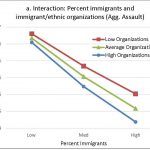 Criminologists have consistently found that neighborhoods with more immigrants do not have more crime, but in fact often have less crime. Criminologists have proposed that voluntary organizations can help neighborhoods deal with problems that can result in more crime. One possibility for why some immigrant neighborhoods have lower crime rates is that they have voluntary… Read more: Lab publication on immigrant organizations and neighborhood crime
Criminologists have consistently found that neighborhoods with more immigrants do not have more crime, but in fact often have less crime. Criminologists have proposed that voluntary organizations can help neighborhoods deal with problems that can result in more crime. One possibility for why some immigrant neighborhoods have lower crime rates is that they have voluntary… Read more: Lab publication on immigrant organizations and neighborhood crime - Lab publication on the 3 D’s and crime
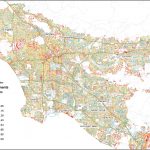 Urban Scholars define the 3 D’s of ecological environments as density, diversity and design. This study constructs measures of these features and assesses how they are related to levels of crime across street segments in Southern California. You can access the article by lab alumnus Young-An Kim and Dr. John R. Hipp in the Journal… Read more: Lab publication on the 3 D’s and crime
Urban Scholars define the 3 D’s of ecological environments as density, diversity and design. This study constructs measures of these features and assesses how they are related to levels of crime across street segments in Southern California. You can access the article by lab alumnus Young-An Kim and Dr. John R. Hipp in the Journal… Read more: Lab publication on the 3 D’s and crime - Lab publication on neighborhoods and gentrification
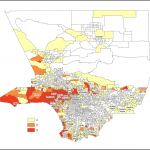 This study proposes a new strategy for measuring gentrification in neighborhoods. It uses a latent class analysis strategy to determine different types of gentrifying neighborhoods based on various characteristics. The study demonstrates that gentrification is not a “one size fits all” type of process, and it can look different across various neighborhoods. You can access… Read more: Lab publication on neighborhoods and gentrification
This study proposes a new strategy for measuring gentrification in neighborhoods. It uses a latent class analysis strategy to determine different types of gentrifying neighborhoods based on various characteristics. The study demonstrates that gentrification is not a “one size fits all” type of process, and it can look different across various neighborhoods. You can access… Read more: Lab publication on neighborhoods and gentrification - Lab publication on (Re)conceptualizing neighborhood ecology in social disorganization theory
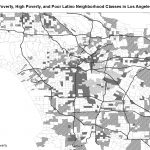 This study encourages researchers to turn away from the common variable-centered approach– adopting instead a “neighborhood-centered” approach– to consider how neighborhood structural forces of interest in social disorganization theory combine into unique constellations or patterns that vary across communities, with consequences for crime. Examining neighborhoods in Southern California we: (1) identify neighborhood typologies based on… Read more: Lab publication on (Re)conceptualizing neighborhood ecology in social disorganization theory
This study encourages researchers to turn away from the common variable-centered approach– adopting instead a “neighborhood-centered” approach– to consider how neighborhood structural forces of interest in social disorganization theory combine into unique constellations or patterns that vary across communities, with consequences for crime. Examining neighborhoods in Southern California we: (1) identify neighborhood typologies based on… Read more: Lab publication on (Re)conceptualizing neighborhood ecology in social disorganization theory